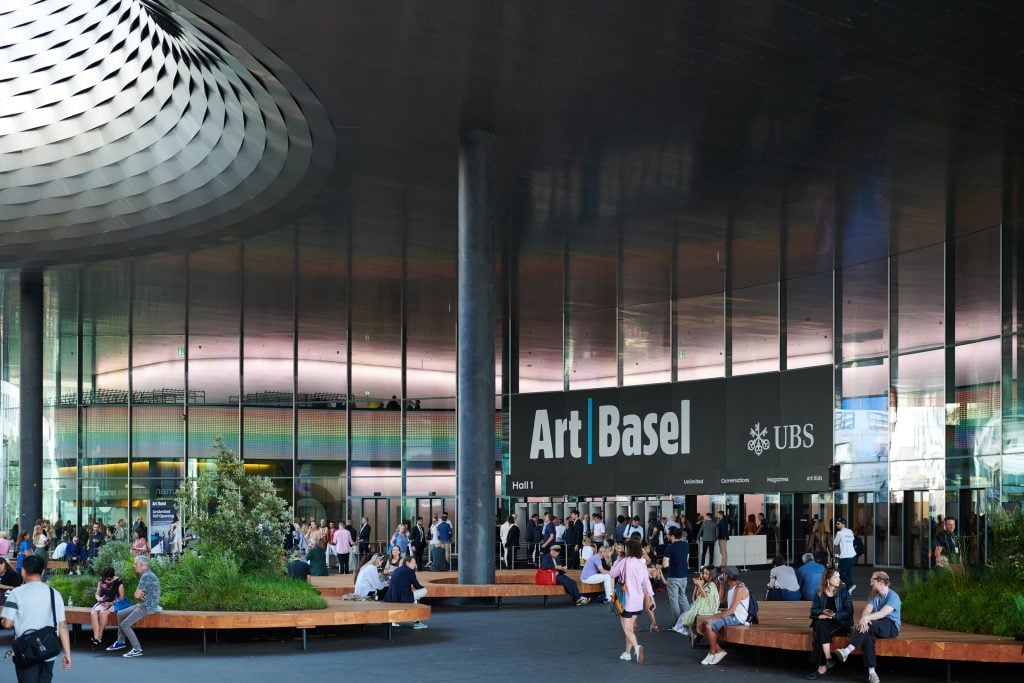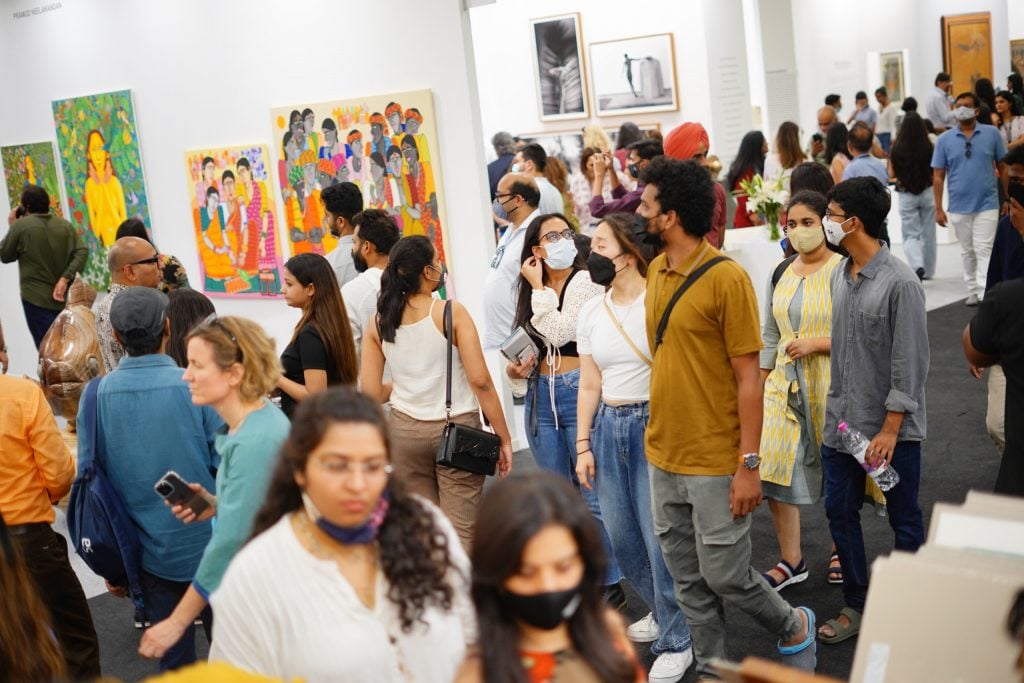Market
What Recession? Wealthy Art Collectors Are Spending More Than Ever—and 3 More Takeaways From the New Art Basel and UBS Report
Art trading is rebounding strongly across the world, so too are the prices wealthy collectors are willing to pay.

Art trading is rebounding strongly across the world, so too are the prices wealthy collectors are willing to pay.

Richard Whiddington

How are the extremely wealthy faring in a year of war, runaway inflation, and soaring energy costs? Pretty good, if their art collecting behavior is anything to go by. Spending is up, so too is the demand for expensive art.
That’s the broad picture presented by “A Survey of Global Collecting in 2022,” a report that Art Basel and investment bank UBS have co-authored since 2014. The report surveys more than 2,700 high-net-worth (HNW) collectors—defined as someone who spends a minimum of $10,000 on art annually—to assess what art collectors are buying, how they are doing so, and, to a certain extent, why.
“Despite the volatile context, HNW collectors have shown amazing resilience,” Clare McAndrew, author of the report, told Artnet News, “they undoubtedly feel that art is a relative safe haven or store of value in turbulent financial times.”
Here are four takeaways from the report.

Visitors at India Art Fair 2022 © India Art Fair
After a pandemic-induced slump, cross-border art trading has rebounded in the past two years. Global imports and exports grew from 2020 to 2021 (41 percent and 38 percent, respectively), momentum that has continued this year and which, if maintained, will likely reach record levels. This correlates with HNW collector spending. Put simply, spending increased in all markets and across all generations.
Median expenditure—$180,000—was higher than in 2021, essentially returning to pre-pandemic numbers. The share of purchases valued north of $1 million also grew, from 12 percent in 2021 to 23 percent, an increase enabled by the full return of auction house sales and art fairs.
The effect the pandemic has had on collecting behaviors remains uncertain. On the one hand, the art fair, a spectacle many anticipated might diminish in number and popularity post-pandemic, is back with 74 percent of surveyed collectors buying at events. On the other hand, the digital habits developed over the past two years remain and online sales hit $12.4 billion, their highest-ever level. Indeed, 37 percent of collectors now prefer to buy work online, up eight points from 2020.
“The art trade itself has been instrumental here in improving the experience collectors have online,” McAndrew said, “and the pandemic gave more people the chance to try it out.” The pandemic also seems to have reminded wealthy collectors of the financial plight of cultural institutions with 45 percent intending to donate work in the coming year. Less than 30 percent said the same in 2020.

Courtesy Art Basel.
Despite the precipitous fall in Ethereum’s value and the volume of NFT trading descending from the giddy heights of 2021, crypto art endures as a stable collecting category. Most straightforwardly, the overall share allocated to digital art grew five percent year-on-year. That has led to NFTs making up nine percent of collections, outstripping film, video art, and photography in popularity. Brazil is most enthusiastic, with 65 percent of collectors planning to acquire NFTs in the coming year.
Overall, this propensity to collect NFTs is shared equally across generations—though, curiously, the median spending of Boomers was double that of Gen Z and triple that of millennial and Gen X buyers. Correspondingly, the average amount collectors are spending on NFTs has increased, reaching a high of $46,000 with 12 percent spending more than $1 million.
HNW collectors are simultaneously motivated by sustainability concerns in purchasing and managing work and unconcerned by the environmental impact of traveling to see work in person. Nearly 60 percent of collectors were willing to pay a 25 percent premium for sustainability, but 77 percent plan to travel more to art-related events in the coming year, though the report identifies a slight shift toward more local events.
“When it comes to purchasing, collecting, researching, shipping collectors will pay more for sustainable options,” said McAndrew, “but there’s a limit and there needs to be more options.”
More Trending Stories: